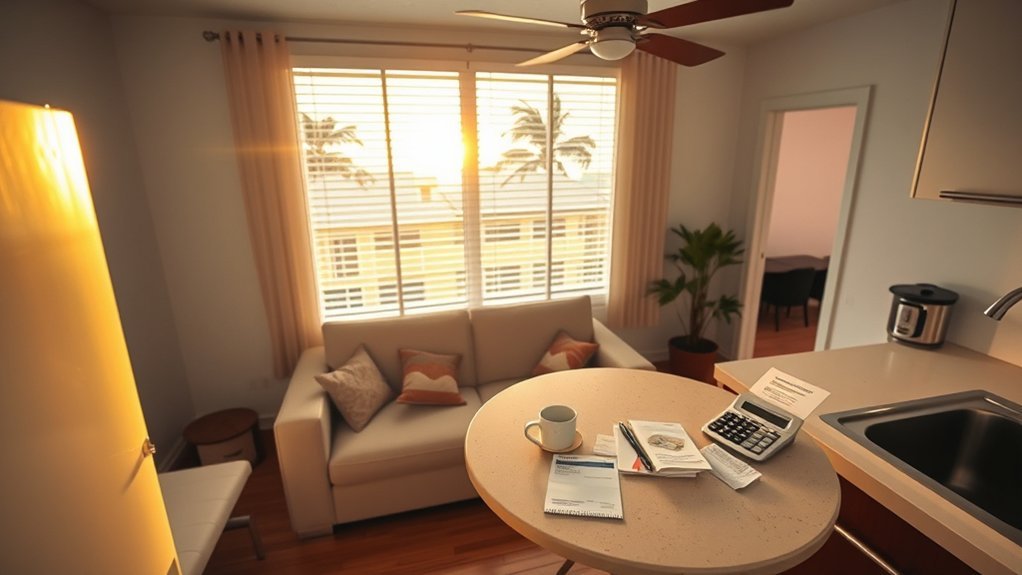You’ll typically need about $2,600 a month as a single person and roughly $5,750 for a family of four to cover rent, utilities, food, transportation and basic healthcare in Hialeah. Rent dominates costs — roughly $1,240 for a single and $2,280 for a family — while food, transport and utilities add several hundred each. Childcare, healthcare and commute choices can push totals higher, and the next section breaks down neighborhoods, tips and one‑time moving costs.
Monthly Budget Breakdown for a Single Person and a Family of Four
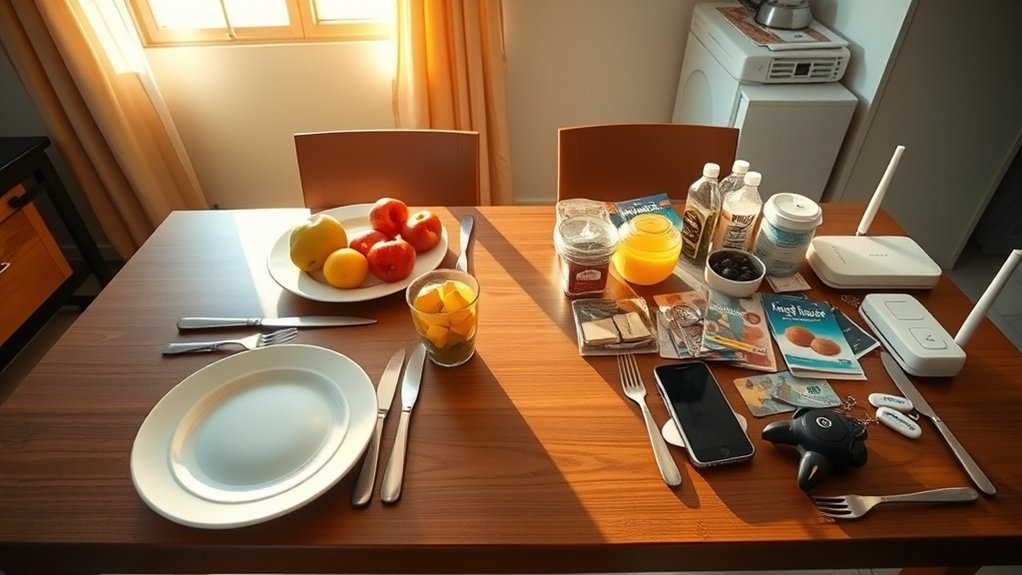
Although costs vary by lifestyle, you can expect clear monthly benchmarks in Hialeah: a single person’s total runs about $2,597 with housing the largest expense at ~$1,243, while a family of four typically spends around $5,752 monthly with housing near $2,280 and especially higher healthcare at about $905.
You’ll see the Cost of Living index reflect modestly higher housing and food costs versus U.S. averages. For a single, food costs average $420 and transportation expenses about $443; for a family, food runs $1,365 and transportation $941.
Monthly rent is the dominant variable — adjust location and unit size to hit your target budget. Energy bills stay relatively low (about $152 single, $261 family), easing overall pressure. Additionally, it’s important to consider licensing fees that may apply if you’re planning to start a group home in the area.
If you’ve got young children, plan for childcare at roughly $8,694 per year. When relocating, one-time purchases like window coverings and lighting will bump initial costs; factor them into your move budget for a realistic short-term monthly outlook.
Rent Trends, Neighborhoods, and Affordability in Hialeah
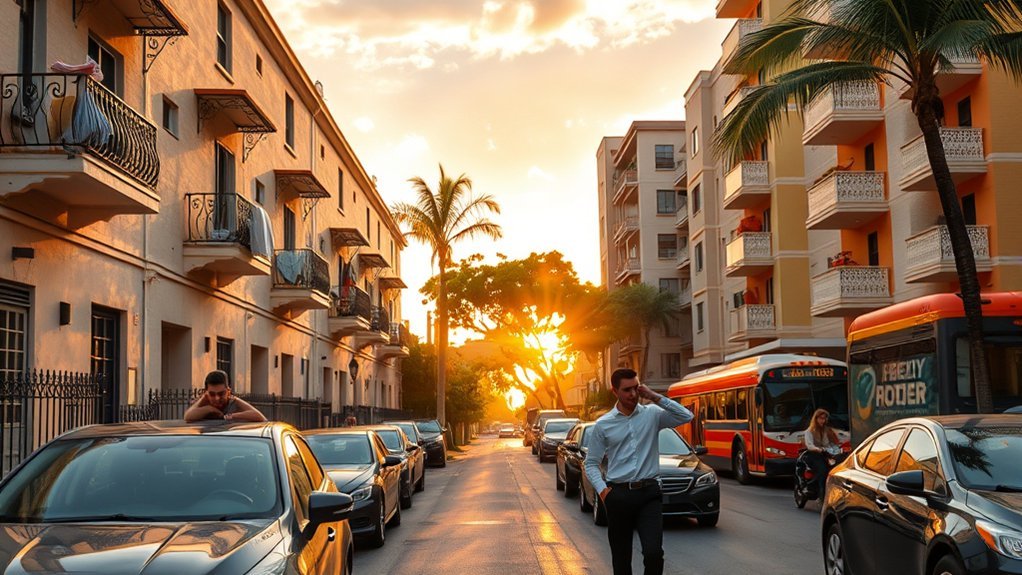
You’ll find current average rents in Hialeah around $1,881/month for one-bedrooms and about $2,272 for two-bedrooms, with an alternate dataset showing citywide averages near $2,211.
Neighborhoods vary sharply — Lake Orleans East, Palm Springs Estates, and Golf Course Towers typically run below city average (e.g., Bellamar Park $1,543; Lake Ruth $1,662), while West Lakes Estates, Palm Springs Villas, and Holleman Manor West can top out (e.g., Rinker Lake $2,675).
To keep rent at or below 30% of income, you’d need roughly $6,270/month ($75,240/year) for the city’s average.
Typical apartment sizes range about 661–869 sq ft and renters comprise ~53% of households. Additionally, understanding the local market conditions can provide valuable insights into future rent trends.
Current Rent Overview
If you’re tracking Hialeah’s rental market, expect modest upward pressure: average rent sits at about $1,881/month (Oct 2025), with one‑bedrooms at $1,881 and two‑bedrooms around $2,272, marking a year‑over‑year rise of just 0.6% (roughly $12/month).
You’ll pay about 15% more than the national average, and three‑bedrooms commonly run $2,723 or higher.
For the 30% rent-to-income guideline, you’d need roughly $6,270/month (about $75,240/year) to cover the average rent without stretching your monthly budget.
Affordable neighborhoods include Lake Orleans East, Palm Springs Estates, and Golf Course Towers; pricier pockets push averages up.
Use these figures to set realistic expectations, compare to national benchmarks, and plan savings or income adjustments before signing a lease.
Neighborhood Price Differences
Look across Hialeah and you’ll see clear neighborhood-to-neighborhood price gaps: average rents range roughly $1,543–$2,675 depending on the pocket and data source, with one‑bedrooms near $1,881 and two‑bedrooms about $2,272.
You’ll find the most affordable neighborhoods—Bellamar Park ($1,543), Lake Ruth ($1,662) and Baracoa ($1,679)—while Rinker Lake ($2,675), Century Gardens ($2,589) and Golf Course Towers ($2,442) sit at the high end.
Year‑over‑year change is modest (+0.6%), yet Hialeah’s average rent stays roughly 15% above the national average.
Listings concentrate in Country Club, Hialeah Acres and The Moors.
Typical apartment sizes span about 661–869 sq ft.
Use rent by neighborhood data to target options that match your budget and space needs.
Rent Affordability Guidelines
While Hialeah’s rents rose only about 0.6% year‑over‑year (roughly $12/month), they still sit about 15% above the national average, so plan accordingly when evaluating neighborhoods and unit sizes.
You’ll see average rent ranges from about $1,881–$2,211 monthly (one‑bedroom ≈ $1,881; two‑bedroom ≈ $2,272), so use precise figures when budgeting.
To follow the 30% rent rule you’d need roughly $6,270/month ($75,240/year) to avoid overspending.
Target more affordable neighborhoods like Lake Orleans East, Palm Springs Estates, or Bellamar Park (≈ $1,543–$1,662) and avoid pricier pockets such as West Lakes Estates, Rinker Lake, and Century Gardens (≈ $2,589–$2,675) if you want better affordability.
Consider roommates—renters are about 53% of households.
Utilities, Energy, Transportation, and Healthcare Costs
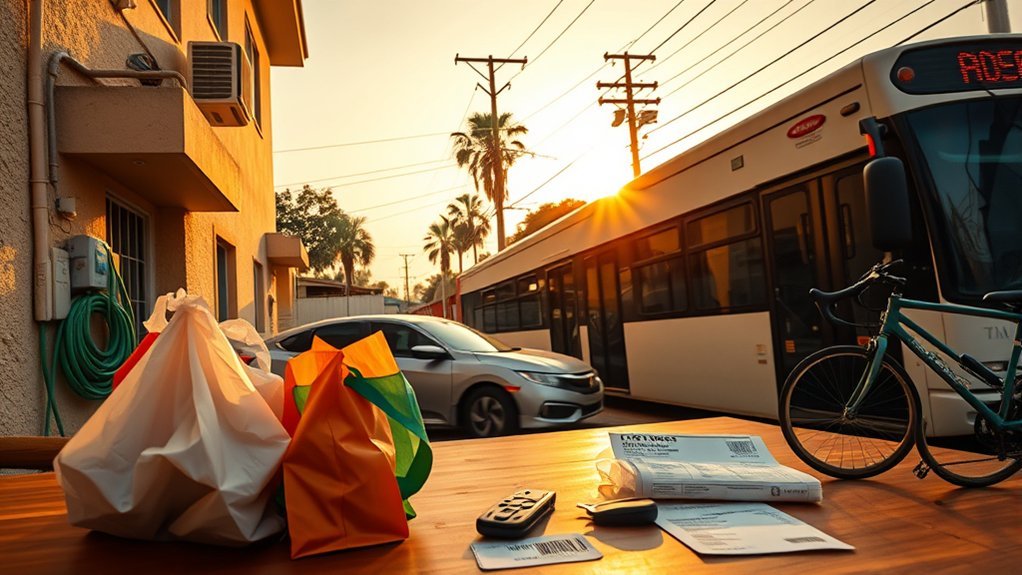
Dig into Hialeah’s household costs and you’ll find energy, utilities, transportation, and healthcare together shape a sizable portion of your monthly budget. You’ll typically pay about $152/month for electricity if you’re single and $261 for a family; statewide electricity prices are down ~5.4% year‑over‑year. Combined utility/energy figures cluster around $218–$219, plus phone bills near $205, which helps explain why utilities trend roughly 5% above national measures.
- Energy: Expect lower-than‑Florida-average rates but budget for seasonal spikes in A/C use.
- Transportation: Plan ~$443/month single or ~$941/month family; gas is about $3.27/gal and public transit fares run ~$2.25 one‑way.
- Healthcare: Estimate ~$339/month single to ~$905/month family; sources vary, showing both slightly below and above national averages.
- Overall budgeting: Factor these into rent decisions, since transportation and healthcare can push total cost of living markedly higher. Additionally, repair costs for school computers can further strain budgets, especially for families with children in education.
Moving to Hialeah: Relocation Costs and Practical Considerations
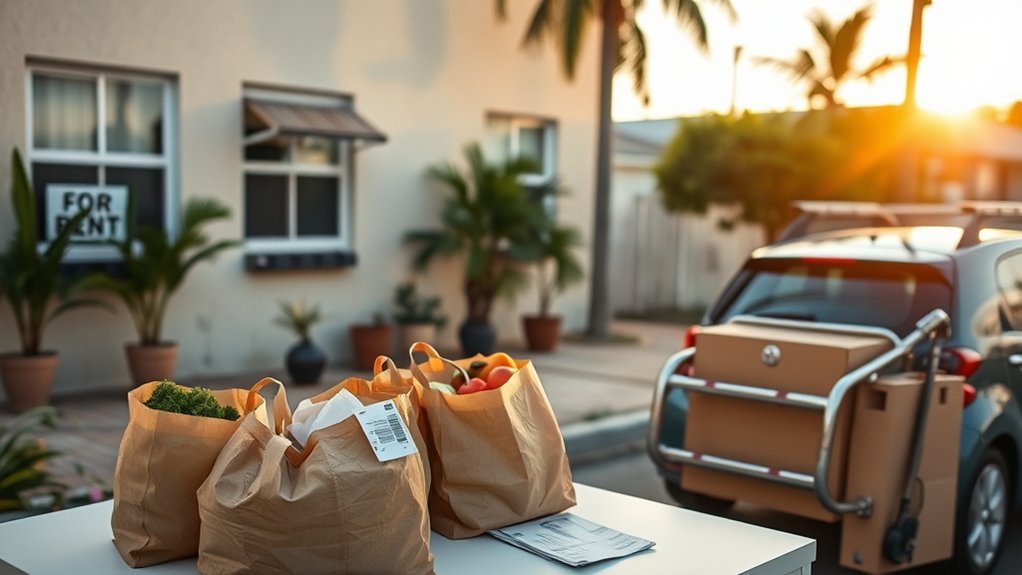
If you’re planning a move to Hialeah, budget for a sizable one‑time relocation cost (an interstate move averages about $5,600 for ~1,200 miles) plus initial home purchases like window coverings, rugs, and lighting.
When moving to Hialeah, add fees for movers, fuel, and incidental travel, and factor in furnishings and outdoor gear you’ll need right away.
Use a cost of living calculator to compare net savings: moves from San Francisco or New York yield big relative savings (roughly 71% and 58% lower), while Miami-to-Hialeah saves only about 6%; Dallas may cost ~3% more.
Plan for first month’s rent and security deposit—average rent prices in Hialeah vary by source ($1,800–$2,211/month; studios ~$1,602–$1,881; two-bedrooms ~$2,272).
Account for local settling costs tied to Hialeah’s street grid, below-average traffic ranking, and favorable tax climate, which will influence commute choices and ongoing expenses after your relocation. Additionally, consider the potential costs of air conditioning blowing hose replacement since maintaining a comfortable home environment is essential in Florida’s climate.
Childcare, Education, and Family‑Related Expenses
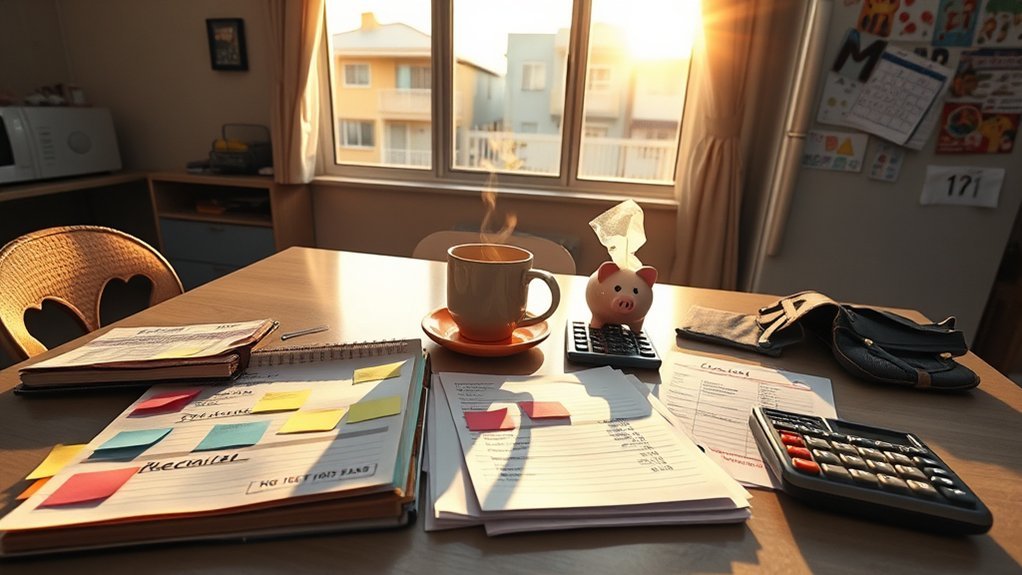
After you set up your home and cover moving costs, plan for childcare and family expenses that will shape your monthly budget in Hialeah. You’ll face childcare costs around $8,694/year (~$725/month) for a child under 3; include that alongside family healthcare estimates near $905/month and total family expenses around $5,752/month.
After moving, plan for roughly $725/month childcare and $905/month healthcare—key parts of Hialeah family budgets.
Housing costs for a family average $2,280/month and food about $1,365/month, both directly affecting childcare affordability and your ability to pay for preschool or after‑school care. Neighborhood choice matters: lower‑cost areas (Lake Orleans East, Palm Springs Estates) tend to offer better childcare affordability than pricier West Lakes Estates.
Don’t forget one‑time setup costs—window coverings, rugs, lighting and outdoor gear—that reduce initial cash available for childcare start‑up. Additionally, consider budgeting for ongoing maintenance costs associated with childcare and family activities.
- Budget the $725/month childcare baseline.
- Factor $905/month healthcare into family totals.
- Prioritize housing costs to protect childcare spending.
- Shop neighborhoods for lower childcare Cost and availability.
Local Lifestyle, Amenities, Traffic, Taxes, and Money‑Saving Tips

You’ll find solid local amenities and easy access to Miami metro cultural and low‑cost entertainment options like college and high‑school sports.
Expect below‑average driver friendliness and modestly higher commuting costs (about $443/month, ~10.7% above U.S. average), so consider public transit or carpooling to cut expenses.
Hialeah’s very favorable tax climate (ranked fourth lowest nationally) and selective neighborhood choices can help offset higher transportation and combined energy/health costs. Additionally, understanding budgeting considerations can further enhance your financial planning in this vibrant city.
Local Amenities & Access
While Hialeah delivers plenty of local amenities—from parks and community sporting events to nearby colleges that host inexpensive entertainment—you won’t find major professional sports teams, which helps keep many leisure costs lower than in larger metro areas.
You can leverage Hialeah’s local amenities to cut living costs: affordable college events, parks, and community leagues replace pricier options.
Transportation costs run slightly above average, so plan for modest commute expenses and consider living near transit to lower your rent in Hialeah and car dependence.
Groceries trend about 11% above U.S. average, so shop bulk or discount stores.
- Use college/high‑school events for cheap entertainment.
- Live near transit to trim transportation.
- Shop bulk/discount for groceries.
- Join community sports to save on fitness.
Traffic, Taxes & Savings
Having used local amenities to trim leisure costs, it’s time to look at how traffic, taxes and everyday bills shape your budget in Hialeah. The favorable tax climate — ranked fourth lowest nationally — helps you keep more earnings, offsetting some higher living expenses.
Traffic is moderately challenging; Hialeah ranks 78th for driver friendliness, so expect congested but manageable commutes. Use the data: average transportation runs about $443/month for singles ($941 for families), while housing is the largest line item at ~$1,243/month for singles and $2,280 for families.
Combined energy, transportation and healthcare sit ~6.7% above average, though electricity is below Florida’s average. To save, live near transit or carpool, target lower-rent neighborhoods (Lake Orleans East, Palm Springs Estates), and seek rentals with utilities included.
Frequently Asked Questions
What Is the Cost of Living in Hialeah, Florida?
You’ll face moderate-to-high costs: expect about $2,600 monthly solo, higher rent around $1,880, public transportation affordable, local groceries pricier, cultural events accessible, utility variability affects bills, and neighborhood safety varies by area.
What Is the Average Cost of Living per Month in Florida?
You’ll face roughly $3,200–$3,600 monthly in Florida. Housing trends, transportation costs, utility averages, food inflation, and healthcare premiums drive this; you’ll want data-driven budgeting to manage rising rents, fuel, utilities, groceries, and insurance.
What Is the Average Cost of Living in Miami, FL?
You’ll need roughly $3,500–$6,500/month in Miami, reflecting high housing, utilities, and groceries; factor Miami nightlife, Cultural diversity, Waterfront recreation, Traffic patterns, and the Job market when budgeting for lifestyle and commuting costs.
What Is the Average Cost of Living Expenses?
Think of expenses as necessary investments: you’ll need about $2,600 monthly solo or $5,750 for a family, factoring utility savings, transport alternatives, food budgets, childcare options, and entertainment costs into that data-driven estimate.
Conclusion
You’ll see the numbers like street signs — rent, utilities, groceries — guiding each choice as you map out life in Hialeah. Picture your monthly budget as a clear spreadsheet: rent and childcare anchor the left column, transportation and groceries fill the right. Use those data points to steer decisions: pick neighborhoods that match your wallet, factor in taxes and commuting time, and tighten discretionary spending to keep your finances humming.

